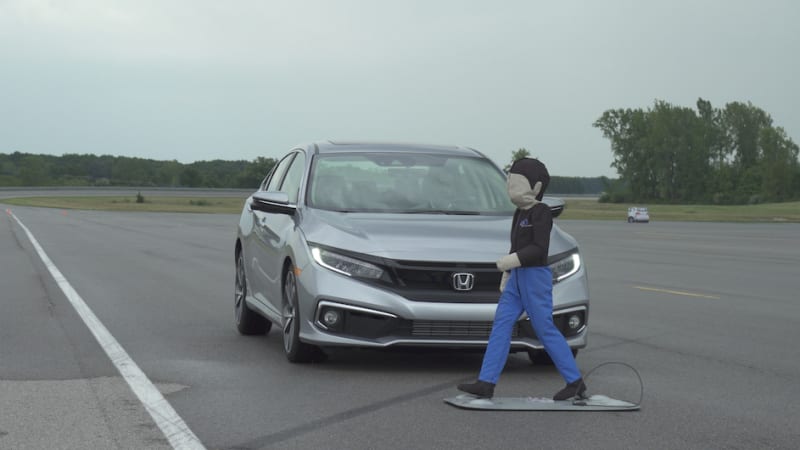AAA finds big flaws with pedestrian detection systems, especially at night
https://ift.tt/2AI5sAt

The American Automobile Association (AAA) has concluded pedestrian detection technology often isn’t as effective as carmakers and regulators claim. It put several popular systems to the test in a variety of conditions, and obtained shockingly bad results in some scenarios.
AAA used a 2019 Chevrolet Malibu with Front Pedestrian Braking, a 2019 Honda Accord with Honda Sensing, a 2019 Tesla Model 3 with automatic emergency braking, and a 2019 Toyota Camry with Toyota Safety Sense. It chose to examine these four sedans due to their popularity.
The study’s most alarming takeaway is that a car can’t see much better than its driver after the sun goes down. AAA wrote all of the systems it evaluated were ineffective at night, which is when 75 percent of pedestrian fatalities occur in the United States. Each manufacturer warns motorists of this limitation in the owner’s manual, so the study merely confirms what drivers should already know.
The technology works better when an adult pedestrian steps out in front of a car traveling at 20 mph in broad daylight. The systems collectively avoided a collision 40 percent of the time, and mitigated the speed of the impact by 4.4 mph an additional 35 percent of the time. Put another way, the car still crashed into the dummy in 60 percent of scenarios — the odds of getting hit remain high.
The systems are become less effective when the pedestrian’s size shrinks, or when the car’s speed increases. Collectively, they avoided a 20-mph collision with a child only 11 percent of the time, and reduced the car’s speed by 5.9 mph an additional 25 percent of the time. None of the cars avoided a collision (or even slowed down) when they encountered a pedestrian after making a right turn at 15 mph, and there was an 89 percent chance of hitting a child who darted out from between two cars, even when traveling at just 20 mph. None of the systems avoided a child running into the road at 30 mph.
AAA urged motorists to remain aware of their surroundings at all times, and not to rely on electronic driving aids to avoid a collision, especially at night. It also recommended that automakers should improve the accuracy of their collision-avoidance systems in low-light conditions. And, if you’re a pedestrian or a biker, Autoblog suggests being as aware of your surroundings as possible. Wear clothing that helps make you visible, especially reflective clothing if you go out at night, and avoid going where drivers don’t expect to find you.
Auto Blog
via Autoblog https://ift.tt/1afPJWx
October 3, 2019 at 05:14PM
